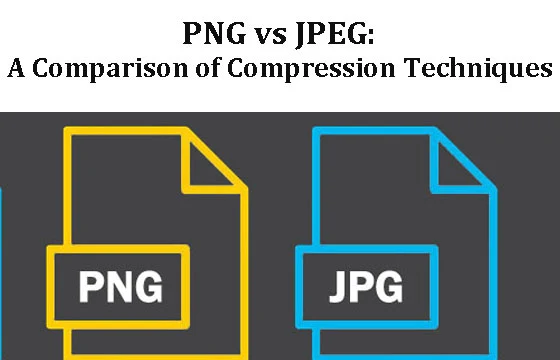In the realm of digital images, choosing the right compression technique is crucial for achieving optimal file size and image quality. Two widely used formats, PNG (Portable Network Graphics) and JPEG (Joint Photographic Experts Group), offer distinct approaches to compression, each with its own set of advantages and disadvantages. In this article, we'll delve into the differences between PNG and JPEG compression techniques, their respective strengths and weaknesses, and scenarios where each format excels.
Understanding PNG Compression
PNG is a lossless compression format primarily designed for storing graphics with sharp edges and areas of solid color. Unlike JPEG, PNG compression does not discard any image data, preserving the exact quality of the original image. This makes PNG ideal for images with text, logos, and illustrations, where precise details and transparency are essential.
Advantages of PNG Compression
Lossless Compression: PNG compression preserves all image data without sacrificing quality, making it suitable for images that require pixel-perfect accuracy.
Transparency Support: PNG supports alpha channel transparency, allowing for smooth blending of images with different backgrounds.
Text and Line Art: PNG is well-suited for images containing text, line art, or graphics with sharp edges, as it maintains clarity and sharpness without introducing artifacts.
Disadvantages of PNG Compression
Larger File Sizes: Compared to JPEG, PNG files tend to be larger in size, especially for complex images with many colors or gradients.
Limited Color Support: PNG is less efficient for photographs or images with continuous tones, as it uses a limited color palette, resulting in larger file sizes.
Understanding JPEG Compression
JPEG is a lossy compression format optimized for photographs and images with continuous tones. Compress jpeg to 50kb achieves smaller file sizes by discarding redundant image data, primarily in areas where the human eye is less sensitive to detail. This results in a slight loss of image quality, which may be imperceptible to the average viewer, particularly at higher compression levels.
Advantages of JPEG Compression
Smaller File Sizes: JPEG compression can achieve significantly smaller file sizes compared to PNG, making it ideal for web use and sharing images online.
Highly Efficient: JPEG compression efficiently reduces file sizes while maintaining acceptable image quality, making it suitable for photographs and images with complex gradients.
Variable Compression Levels: JPEG allows users to adjust compression levels, balancing between file size and image quality according to their preferences and requirements.
Disadvantages of JPEG Compression
Loss of Image Quality: JPEG compression introduces artifacts and loss of detail, particularly at higher compression levels, which can be noticeable in images with sharp edges or text.
Lack of Transparency: JPEG does not support transparency, making it unsuitable for images that require transparent backgrounds or overlays.
Susceptibility to Compression Artifacts: Overcompression can lead to visible artifacts such as blockiness, blurring, and color banding, especially in areas with high contrast or fine details.
Comparison of PNG and JPEG Compression
Use Cases
PNG: Ideal for images containing text, line art, or graphics with sharp edges, as well as images requiring transparency.
JPEG: Well-suited for photographs, images with continuous tones, and web graphics where smaller file sizes are desirable.
File Sizes
PNG: Generally results in larger file sizes due to lossless compression and support for transparency.
JPEG: Achieves smaller file sizes, making it more suitable for web use and sharing images online.
Image Quality
PNG: Preserves pixel-perfect image quality without introducing artifacts or loss of detail.
JPEG: Introduces lossy compression artifacts, particularly at higher compression levels, which may affect image quality.
Transparency Support
PNG: Supports alpha channel transparency, allowing for smooth blending of images with different backgrounds.
JPEG: Does not support transparency, making it unsuitable for images requiring transparent backgrounds or overlays.
Compression Efficiency
PNG: Less efficient for photographs or images with continuous tones, resulting in larger file sizes.
JPEG: Highly efficient for photographs and images with complex gradients, achieving smaller file sizes while maintaining acceptable image quality.
Conclusion
In conclusion, the choice between PNG and JPEG compression depends on the specific requirements of the image and its intended use. PNG is preferred for images requiring lossless compression, transparency, and pixel-perfect accuracy, such as graphics, logos, and text. On the other hand, JPEG is more suitable for photographs, images with continuous tones, and web graphics where smaller file sizes are desirable. By understanding the differences between PNG and JPEG compression techniques, users can make informed decisions to optimize image quality and file sizes according to their needs.

